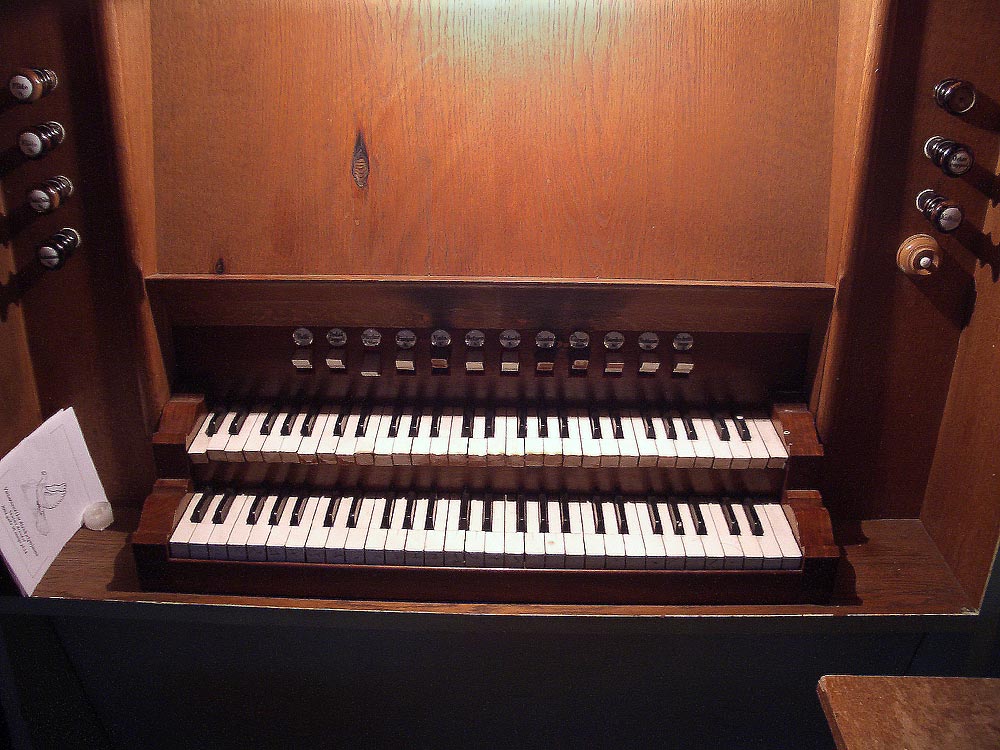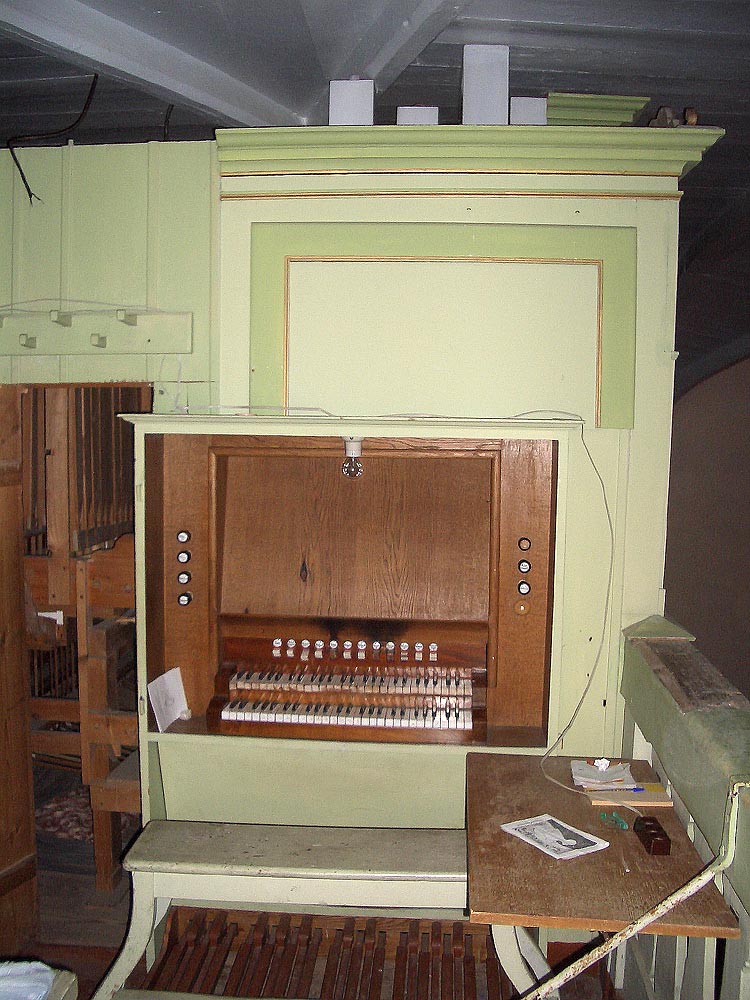Skulte, Skultes Svētā Matīsa evaņģēliski luteriskā baznīca
| Builder | J. Bētiņš |
|---|---|
| Year | ca. 1904 |
| Period/Style | Romantic |
| Stops | 14 |
| Keyboards | 2+P |
| Keyaction | pneumatic |
| Tuning | Equal at 419 Hz |
The Skulte church organ was originally built by August Martin in Riga in 1857, as indicated by an inscription that partially survived on the organ’s case. This one-manual instrument without pedals, featuring four stops, was consecrated on November 10, 1857, Martin's Day. The instrument was rebuilt in 1902, making it difficult to determine its original opus number. It is likely that the initial construction included the use of all four original registers, which were partially retained in the 1902 rebuild.
In 1904, Jānis Bētiņš further modified the organ by applying the Multiplex system, adding pneumatic action to the first manual and pedal, and constructing a new console. The organ underwent another significant repair after World War I in 1925, carried out by the Martin-Kolbe organ building firm, costing 1067.20 Latvian rubles. However, the instrument suffered severe damage in 1989 when it was vandalized by three teenagers, causing extensive harm to 340 pipes and other parts of the organ. A restoration attempt was made in 1991 by Ilmārs Lāms, but the pneumatic components of the first manual are still not fully functional.
Initially built as a mechanical organ with four stops on one manual and no pedals, the 1904 additions and subsequent modifications have not maintained the original quality and functionality. The 1989 vandalism and subsequent repairs have further compromised the organ’s condition. The original pitch was altered when the first manual and pedal were added, lowering it by half a tone. Despite the challenges, the second manual wind chest, built in a traditionally solid manner by August Martin, remains intact, especially the completely preserved Traversflöte 8' stop.
In 1904, Jānis Bētiņš further modified the organ by applying the Multiplex system, adding pneumatic action to the first manual and pedal, and constructing a new console. The organ underwent another significant repair after World War I in 1925, carried out by the Martin-Kolbe organ building firm, costing 1067.20 Latvian rubles. However, the instrument suffered severe damage in 1989 when it was vandalized by three teenagers, causing extensive harm to 340 pipes and other parts of the organ. A restoration attempt was made in 1991 by Ilmārs Lāms, but the pneumatic components of the first manual are still not fully functional.
Initially built as a mechanical organ with four stops on one manual and no pedals, the 1904 additions and subsequent modifications have not maintained the original quality and functionality. The 1989 vandalism and subsequent repairs have further compromised the organ’s condition. The original pitch was altered when the first manual and pedal were added, lowering it by half a tone. Despite the challenges, the second manual wind chest, built in a traditionally solid manner by August Martin, remains intact, especially the completely preserved Traversflöte 8' stop.
| I. Manual (1902) | II. Manual (1857) | Pedal (1902) |
|---|---|---|
| Bordun 16' | Salicional 8' | Subbass 16' |
| Principal 8' | Hohlflöte 8' | Gedacktbass 8' |
| Gedackt 8' | Flöte 8' | |
| Gamba 8' | Flöte 4' | |
| Octave 4' * | ||
| Viola 4' | ||
| Cornett 2 fach | ||
| Mixtur 3-4 fach |
rk 05
0:00
0:00
https://orgcat.lv/skulte_main.htm
 Pipe Organ Map
Pipe Organ Map

